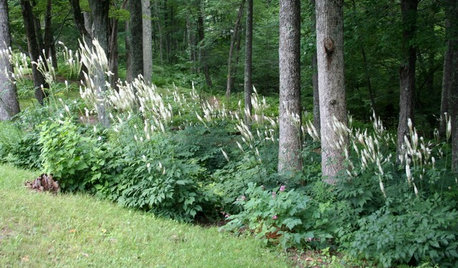Ginseng Leaves
franc
19 years ago
Related Stories

ARTThe Beauty of Bonsai — Living Art, Rooted in Harmony
Create your own emblem of nature's balance with an art form dating back 1,000 years
Full Story
GARDENING GUIDESGreat Design Plant: Actaea Racemosa
Elegant flowers top black cohosh in summer woodland gardens
Full Story
DECORATING GUIDESHouzz Tour: Couple Pares Down and Pumps Up the Style
A big transition from a large suburban house to a 1,200-square-foot urban condo is eased by good design
Full Story
HOUZZ TOURSMy Houzz: A Classic Midcentury Home Wrapped in Windows
A couple's 4-year restoration and renovation results in a bright look for their wood-paneled house in New York
Full StoryMore Discussions






Herbalynn
veeja11
Related Professionals
Fort Lee Landscape Architects & Landscape Designers · Lyons Landscape Architects & Landscape Designers · Wilmington Landscape Contractors · Surprise Landscape Contractors · Broomfield Landscape Contractors · Fort Payne Landscape Contractors · La Mirada Landscape Contractors · Muttontown Landscape Contractors · Nutley Landscape Contractors · Point Pleasant Landscape Contractors · Streamwood Landscape Contractors · Tehachapi Landscape Contractors · South Orange Roofing & Gutters · West University Place Roofing & Gutters · Weston Roofing & GuttersfrancOriginal Author
kevin_nsw
lundpix
rusty_blackhaw
Phylla
francOriginal Author
eibren
lundpix
Phylla